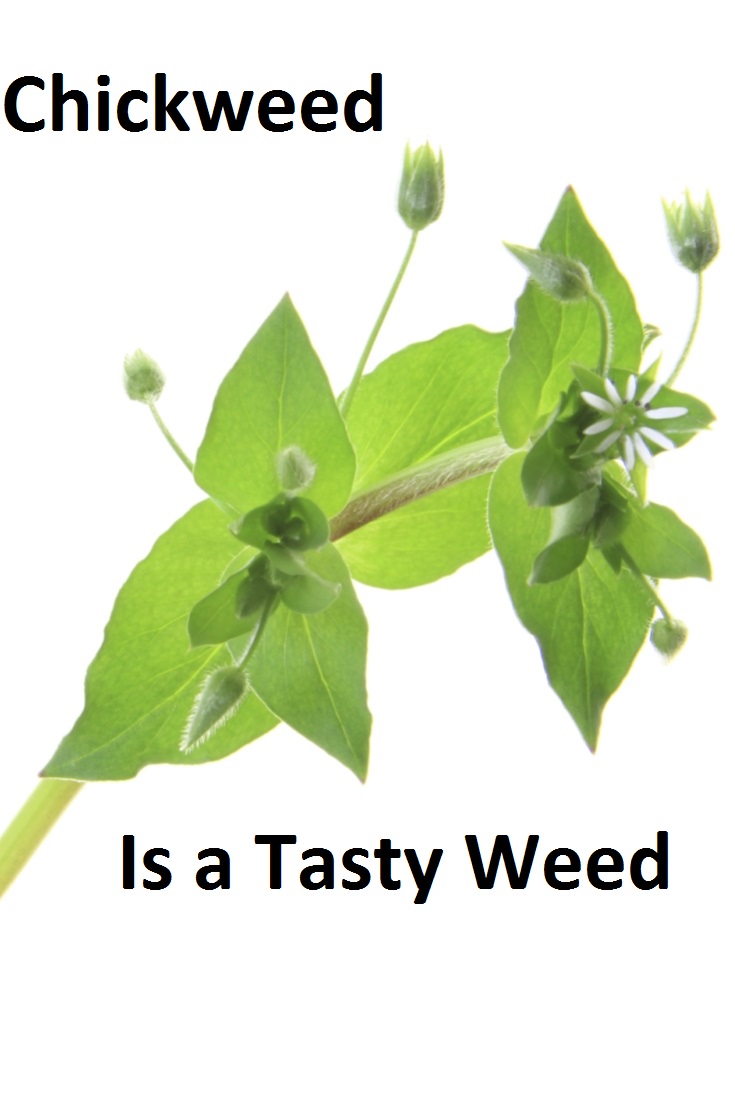Chickweed is a tasty nutritious weed. Many of the weeds in our garden are food that I include them in my meals and let some of them grow as real food in my garden. Those green leafy weeds like pigweed, dandelion leaves, chickweed, nettles, lambs quarters are actually nutritious.
‘Little star in the mist’ is the translation of this weed’s scientific name, Stellaria Media, though “chickweed” is the most common name. It’s no surprise it’s called chickweed since chickens love it so much!
Chickweed is Edible, Free and Tasty Too!
Chickweed is surprisingly delicious in salads, I use my scissors to cut it before I dig it up so that the rest of my vegetables can easily grow.
Chickweed for Health
- Chickweed has been used for indigestion and for coughs, rheumatoid arthritis, psoriasis, stomach ulcers and as a “blood cleanser”.
- Is a tonic, diuretic, demulcent, expectorant, and mildly laxative.
- Is often an ingredient in herbal weight loss preparations.
- Relieves itching and inflammation.
- Sometimes used topically to alleviate itching from insect bites.
- Can be used as a cream for rashes and eczema, easing itching and inflammation. As it is soothing and moisturizing for the skin, it is an ingredient in some skin care products.
Note: There has been very little scientific research done on this wonderful weed to validate its effectiveness for medicinal uses.
Learn more about Cooking with Wild Plants.

Folklore Uses for Chickweed
- It is used as a tonic, diuretic, demulcent, expectorant and mild laxative.
- Chickweed water is an ‘old wives’ remedy for obesity.
- It is often an ingredient in herbal weight loss pills.
- This weed is soothing and moisturizing for the skin and is an ingredient in some skin care products.
- It has been used for indigestion, for coughs, rheumatoid arthritis, and stomach ulcers.
Nutritious Chickweed
It is rich in minerals (magnesium, iron, calcium, potassium, zinc, phosphorus, manganese, sodium, selenium, silicon, copper and iron). Also, contains vitamins A, B and C, flavonoids, carboxylic acids, PABA and omega-6 fatty acid.
Please Note
Chickweed contains nitrates, which can be harmful in large quantities. Also, there are poisonous weeds that look a little like chickweed.
Two ways to avoid chickweed look-alikes:
1. Chickweed doesn’t have milky sap.
2. Chickweed has one line of hairs on its stem that changes sides with each pair of leaves.
Chickens like this weed so much which is why it is called chickweed!
Chickweed Trivia
- When it is going to rain, the chickweed leaves fold up.
- This weed originated in Europe; now it can be found all over the world, even in Greenland and the Arctic Circle.
- It likes to sleep in, so its blossoms don’t open until late morning.

It is Free And Tasty!
It is great in salads especially as an addition to other greens like lettuce and arugula and it grows profusely in my garden. I take scissors out and cut it before I did it up to let the rest of my vegetables grow. No worries about there being a shortage.
Add it to salads or sandwiches instead of lettuce 
This weed grows almost everywhere! It is very easy to pull up as it grows in clumps of bright green with tiny white flowers. I simply add them to my salads and occasionally to soups, steamed vegetables and stews.
OK, now you know about a weed that you can eat. So get out there and harvest this free food. While you are at it, harvest some more free food such as pigweed, dandelion leaves, nettles and lambs quarters.
See the yummy salad I made with the chickweed I harvested. I used half of the above for this salad.

Make some Tasty Vegan Chickweed Pesto – This chickweed pesto is vegan, is easy to make and tastes great! One of the best things about it is that it is made from a weed that grows everywhere. It is a delicate green weed which is so good for pesto. Toss this pesto with pasta or serve it with bread or crackers for an appetizer.

